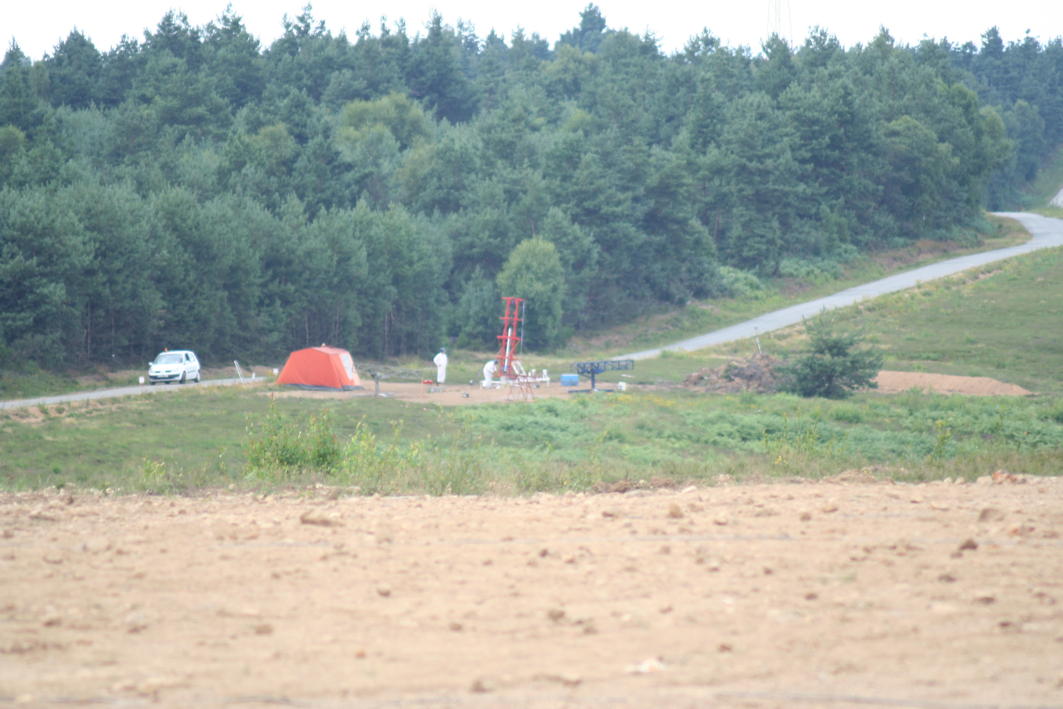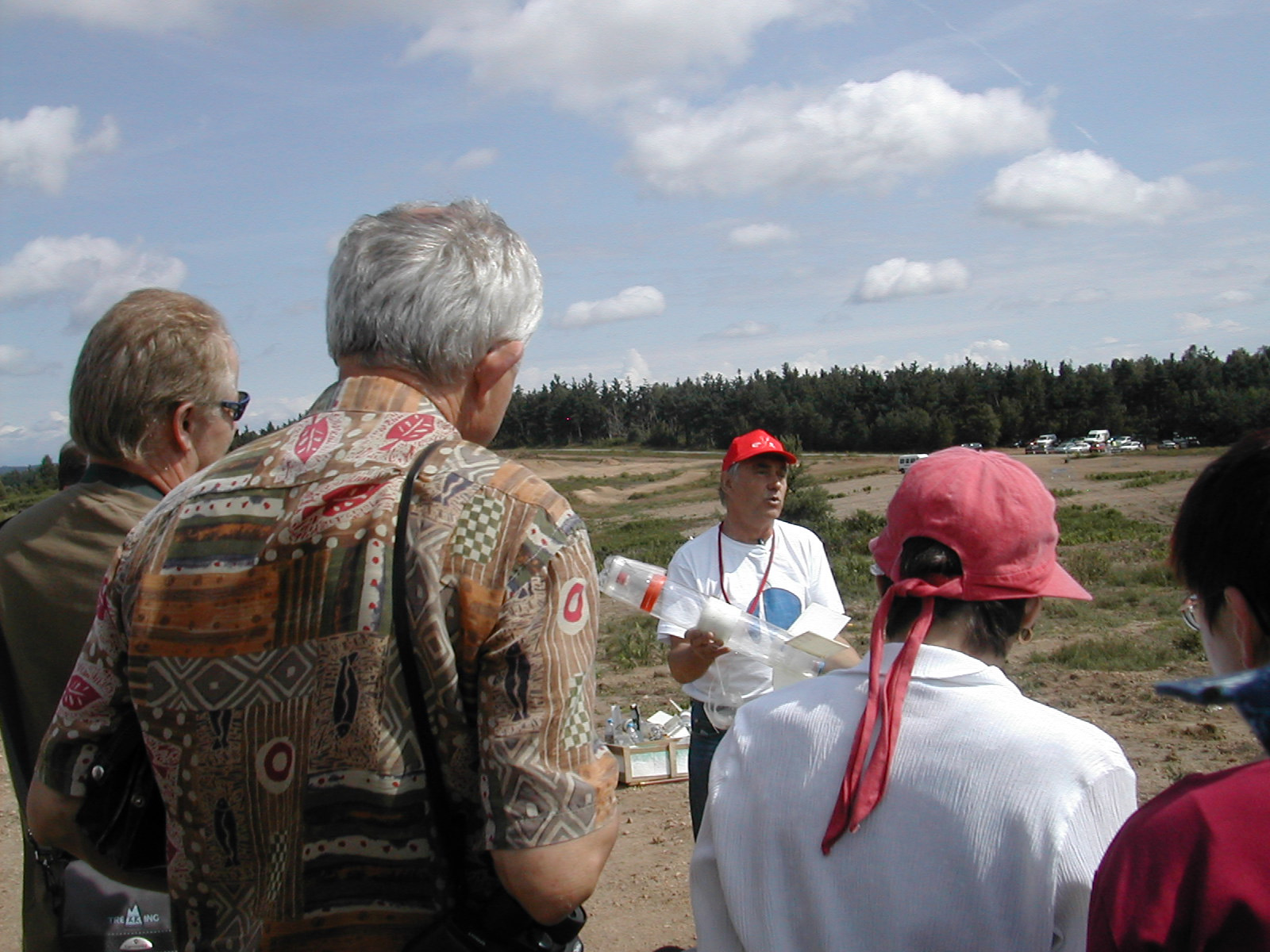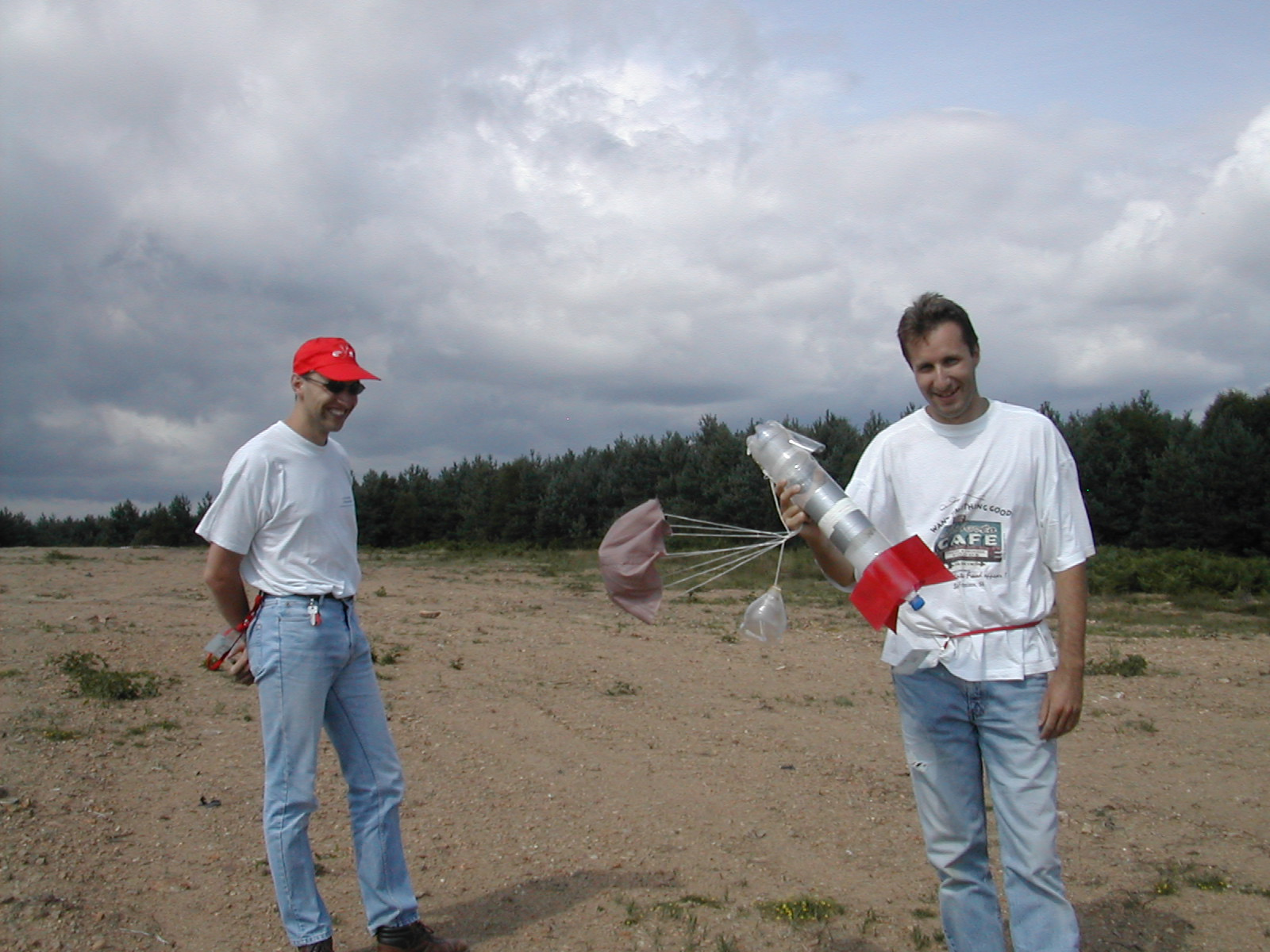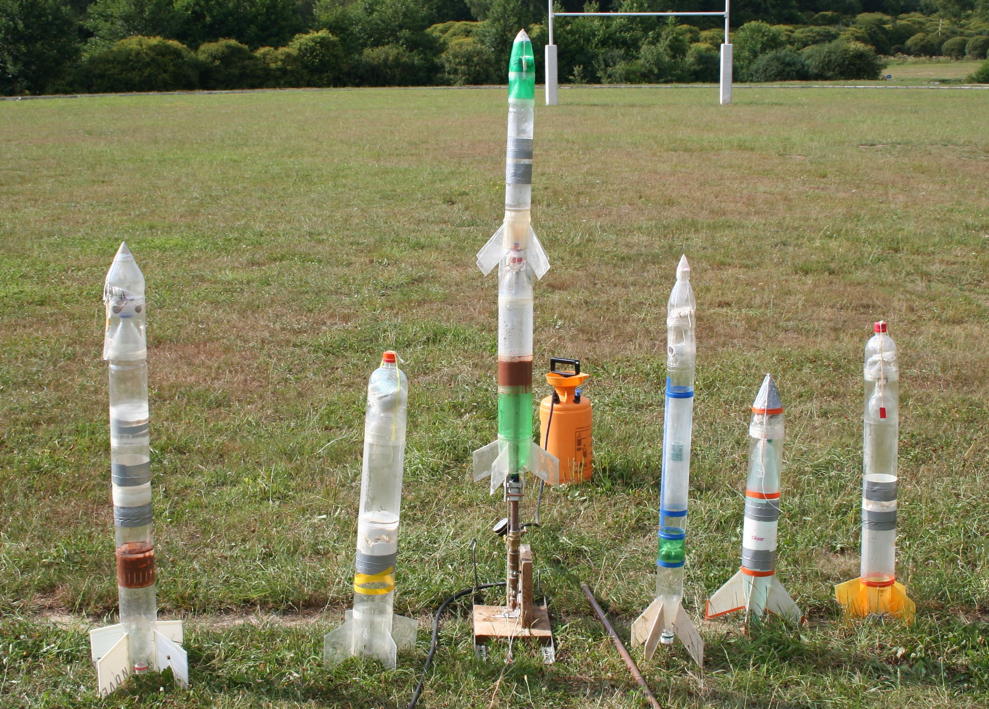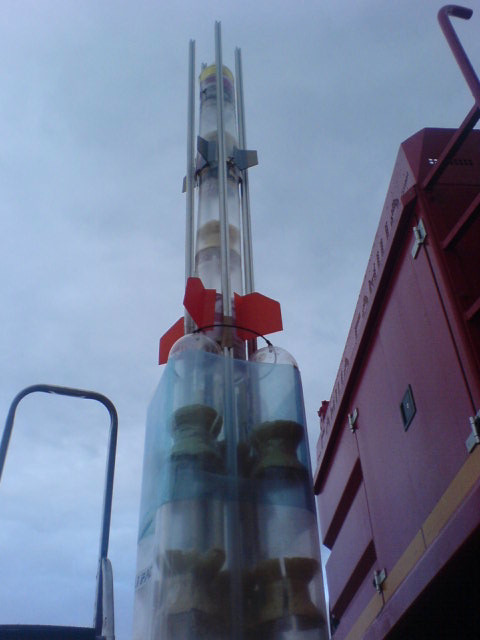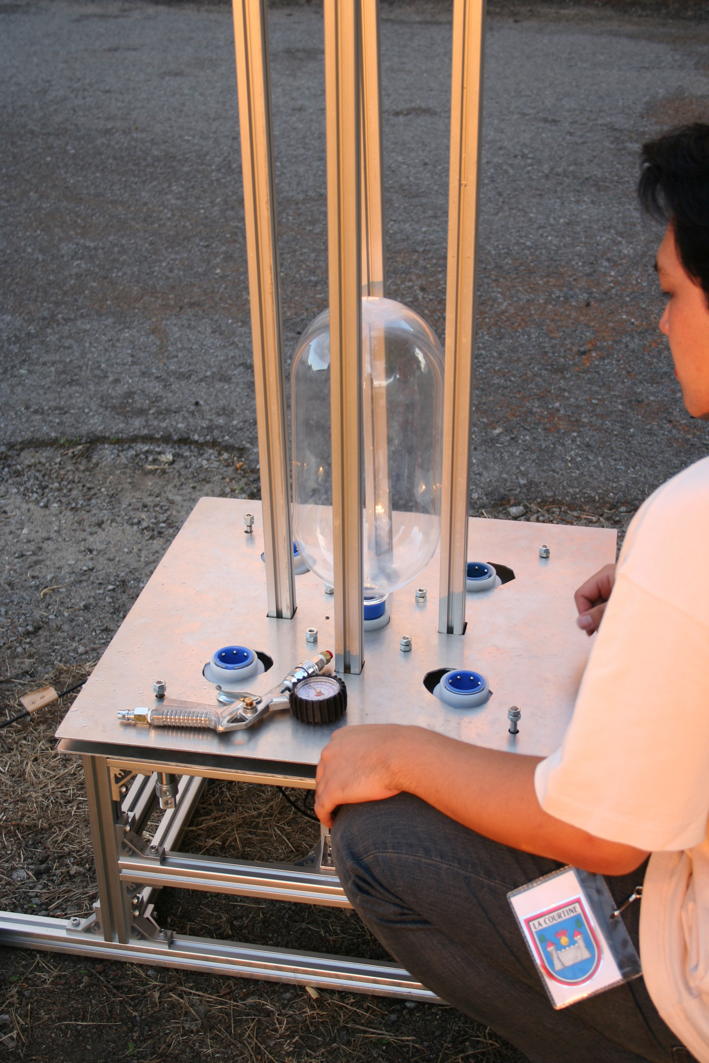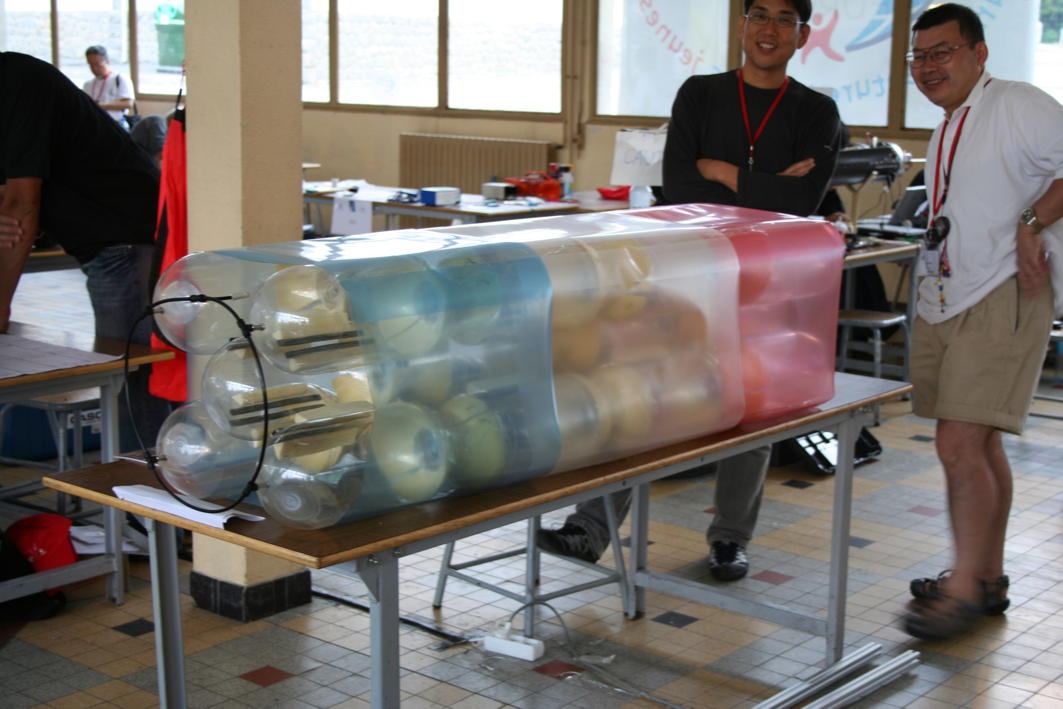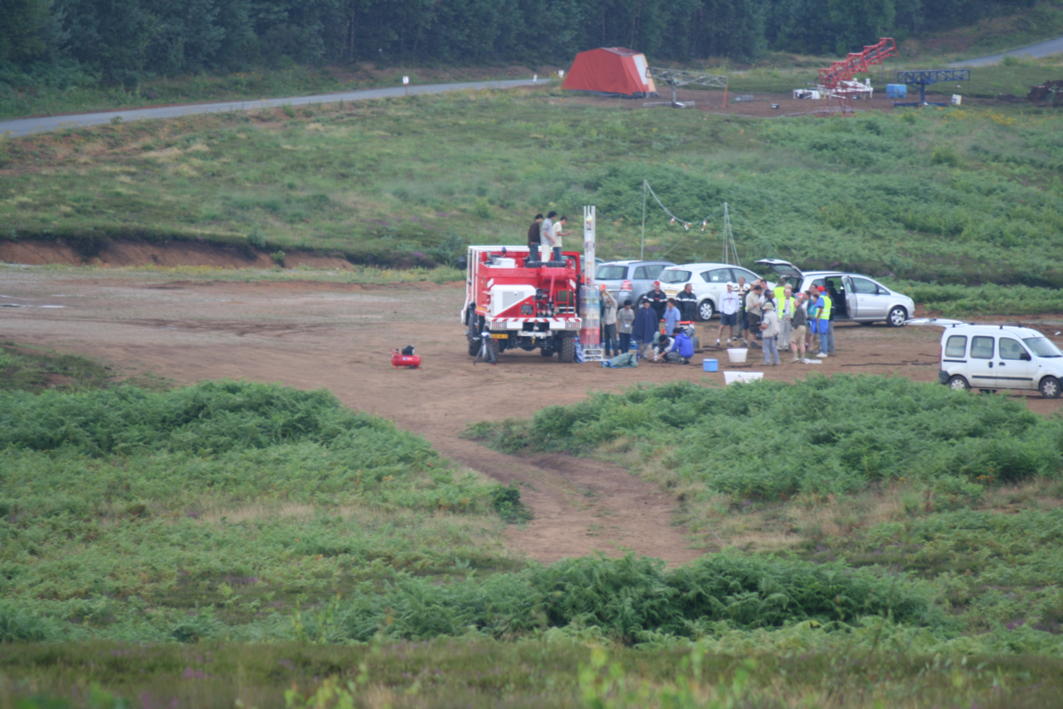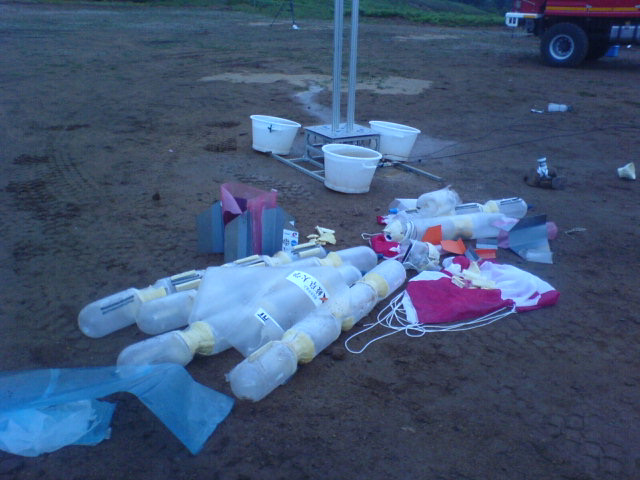La Courtine 2006
|
The Courtine camp is located in central France west of Clermont-Ferrand.
|
This year, of course, the CLESFACIL was present with its fusex (experimental Rocket) ANAIS. For my part I did some demonstrations of water rockets, but there was also a Japanese club that came with a huge water rocket that was worth the trip.
The fusex ANAIS of CLES-FACIL
|
This year, the CLES_FACIL rocket is called ANAIS. Its purpose is to control the roll of the rocket. Like any non-perfect body moving in a fluid, the rocket spins on itself because of imperfections on the ailerons. The club therefore tried to prevent the rocket from spinning. For this, a pneumatic system has been developed, which has never been produced before in experimental rockets. A 200 bar compressed air cylinder was placed in the warhead. A regulator made it possible to distribute the air at 6 bars to the 2 valves. A gyroscope placed in the rocket measured its rotation and, thanks to an electronic data processing system developed by the members of the club, the valves were actuated to expel or not the air and thus create a reverse torque. to rotation. To control the experiment, we placed a camera at the top of the rocket. Thanks to a mirror system, we obtained on the image the body of the rocket as well as the ground. Thus, we were able to verify the correct operation of our servo-control. The theft took place on Saturday July 29 at 5 p.m. at the La Courtine military base (Creuse). It was a nominal flight (the rocket fell intact with its parachute), the peak of which is around 1200 meters and the measurements collected are of very good quality. |
|
|
|
The rocket and the CLES-FACIL team
|
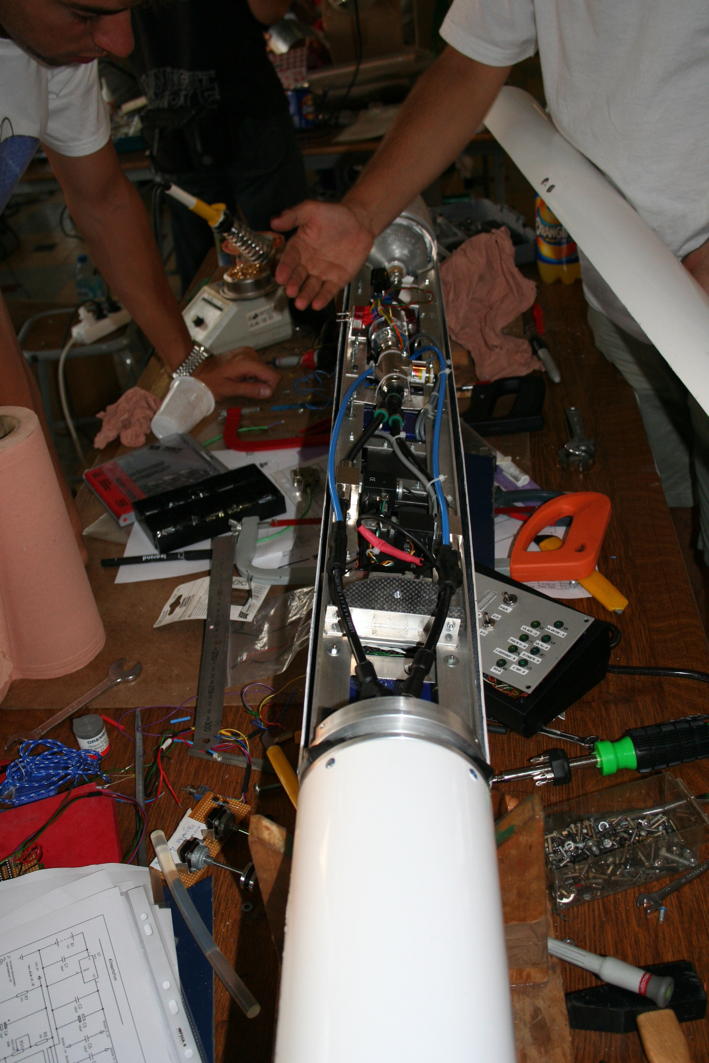 |
|
We see here the pneumatic part of the rocket, at the top the pressurized cylinder (200 bars), then the regulator followed by the solenoid valves. The ejection nozzles being placed in the aluminum ring. |
|
 |
|
|
|
Ready for the take-off |
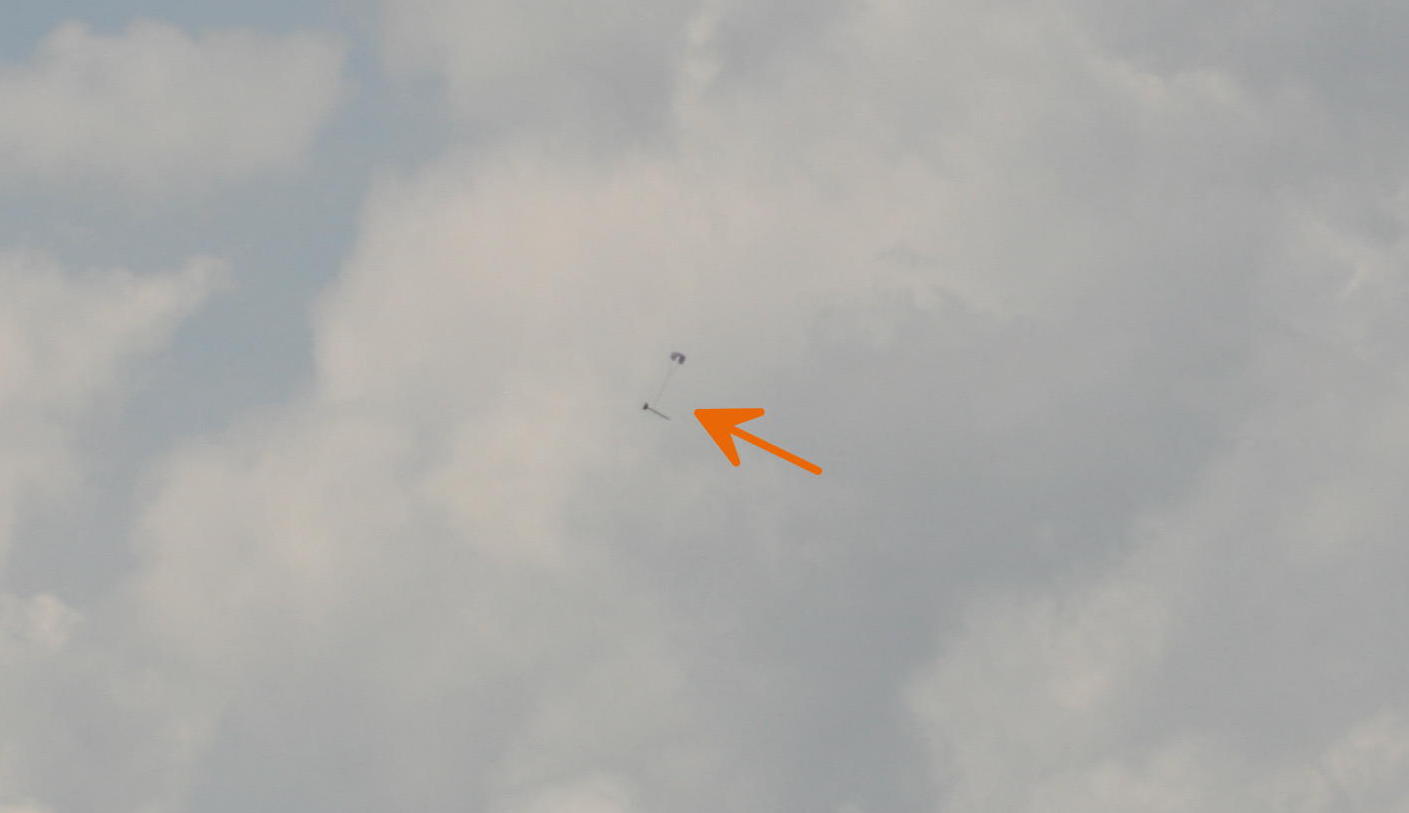 |
|
Back under parachute |
My water rockets
|
First, some explanations to the large public that day.
|
|
Two very simple rockets
|
|
Then a rocket with an aerodynamic flap recovery system
|
|
The same after the flight
|
|
Others were ready.
|
The huge Japanese water rocket
This rocket consisted of 23 huge bottles (I believe that it was 12 liters each). The first stage had 5 times 4 bottles, the second two bottles and the third only one bottle.
The photo below shows the set.
|
|
|
Th launch pad
|
|
More general view of the launch pad with part of the first floor
|
|
The first stage assembled. I don't know if the plastic films which wrap the bundle of bottles are blue, white and red by chance or to thank France for having hosted them for this launch. If so, that's a nice touch, thank you to the Japanese team.
|
|
The nozzles
|
|
The second stage
|
|
The preparation of the launch, it was necessary to call on the fire truck to fill the rocket, both for access to the upper stages and especially for the quantity of water.
|
|
The launch went badly since the rocket broke up as soon as it left the ramp. We see here the pieces a little scattered. It's a shame because the project was really beautiful. |


